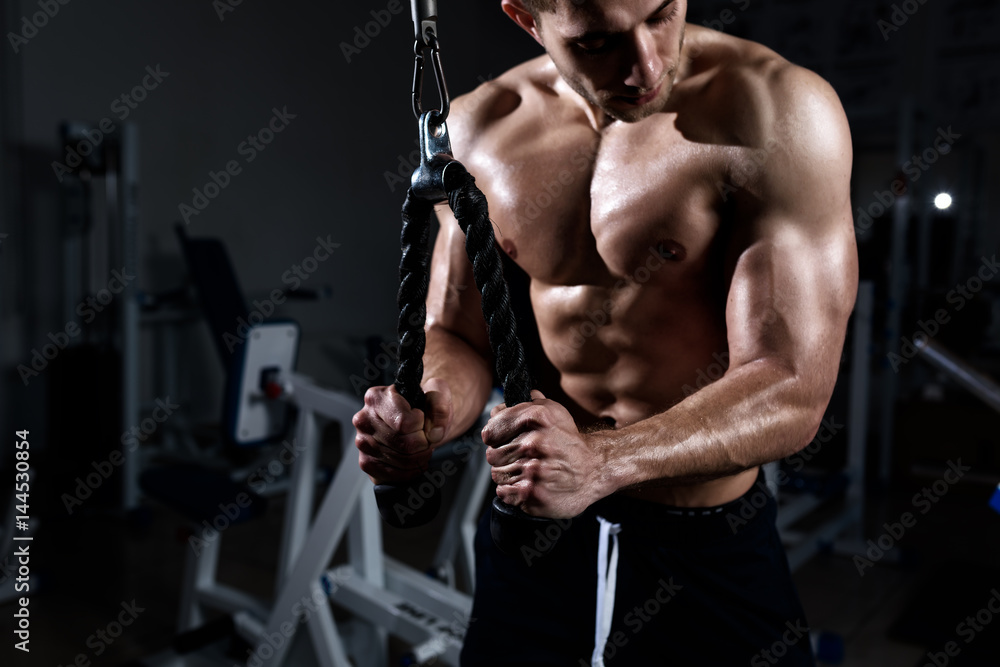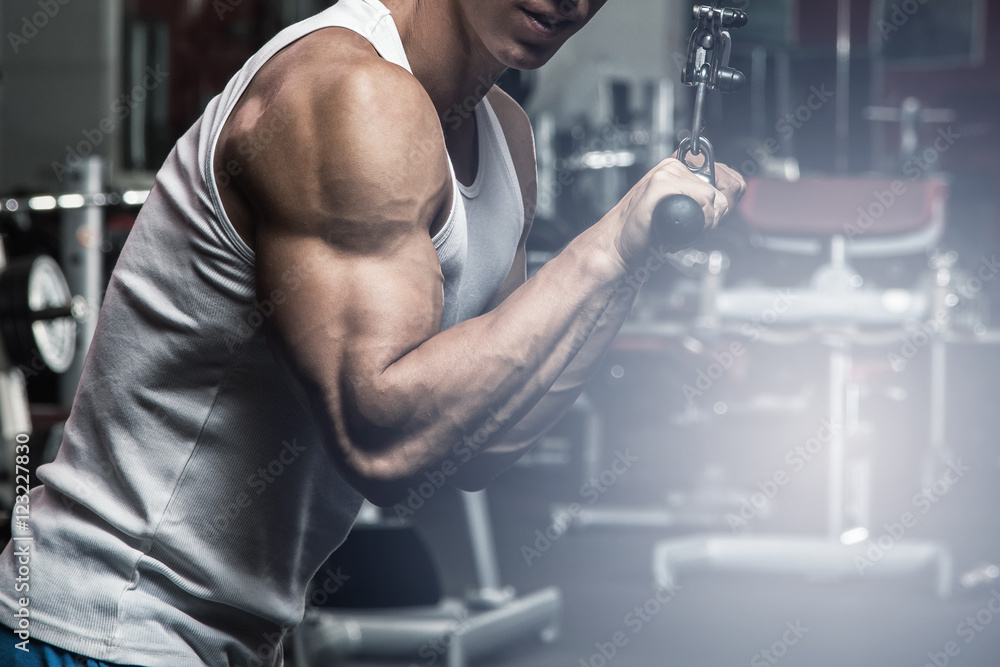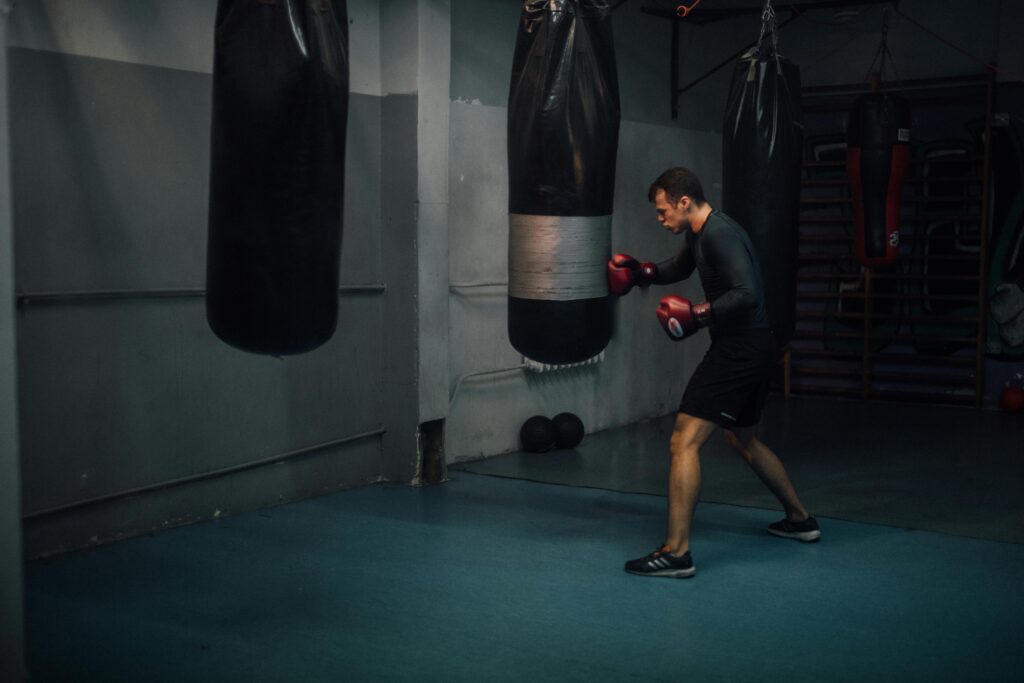Boxing is not just about throwing punches; it’s a symphony of techniques that combines speed, power, and precision. Each type of punch engages different muscle groups and showcases unique strengths and weaknesses. Understanding the mechanics behind your punches can provide invaluable insights into your boxing skills and help you improve your overall performance in the ring. Let’s dive into the major punches in boxing, the specific muscles involved, their strengths and weaknesses, and what they reveal about your physical capabilities.

1. The Jab: Quick and Precise
- Muscles Used: Deltoids, Triceps, and Pectorals
- Deltoids: The primary muscle responsible for shoulder movement. Strong deltoids allow for quick, precise jabs.
- Triceps: Enable the extension of the arm, providing speed and control in your jab.
- Pectorals: Assist in pushing the arm forward.
- Strong Jab: Indicates well-developed deltoids and triceps. A powerful jab can disrupt your opponent’s rhythm and create openings for follow-up punches.
- Weak Jab: Suggests a lack of shoulder and tricep strength. If your jab lacks speed or power, focusing on shoulder and tricep strength can significantly enhance your performance.

2. The Cross: The Power Punch
- Muscles Used: Pectorals, Deltoids, Core, and Quadriceps
- Pectorals: Generate significant force during the punch.
- Deltoids: Assist in arm movement and stabilization.
- Core: Provides stability and rotational power, crucial for delivering a strong cross.
- Quadriceps: Help drive your body weight into the punch.
- Strong Cross: Reflects a strong upper body and core. A powerful cross can be a fight-ender when executed properly, showcasing your ability to generate force.
- Weak Cross: Suggests insufficient upper body and core strength. If your cross feels weak, emphasize strengthening your chest, core, and legs through targeted exercises.

3. The Hook: The Angular Attack
- Muscles Used: Biceps, Core, Shoulders, and Obliques
- Biceps: Crucial for flexing the arm and delivering the hook effectively.
- Core: Provides stability and power through rotation.
- Shoulders: Assist in maintaining the arm’s position during the punch.
- Obliques: Important for the twisting motion needed for a powerful hook.
- Strong Hook: Indicates robust upper body and core strength. A powerful hook can catch opponents off-guard, leading to effective combinations.
- Weak Hook: If your hooks are weak, it suggests a lack of bicep and core strength. Consider integrating bicep and core exercises into your routine for further enhancement.

4. The Uppercut: The Surprise Punch
- Muscles Used: Core, Quadriceps, Glutes, and Shoulders
- Core: Essential for generating upward force and stability.
- Quadriceps and Glutes: Provide the power needed for the upward motion.
- Shoulders: Help in lifting the arm and delivering the punch effectively.
- Strong Uppercut: Indicates good core stability and leg strength. A well-executed uppercut can catch opponents unprepared, showcasing your explosive power.
- Weak Uppercut: If your uppercuts lack power, it suggests weaknesses in your leg and core strength. Incorporating squats and glute exercises can improve your effectiveness.

5. Body Shots: The Game-Changer
- Muscles Used: Obliques, Core, and Shoulders
- Obliques: Critical for twisting and delivering powerful body punches.
- Core: Provides the necessary stability and force for effective delivery.
- Shoulders: Assist in maintaining control and positioning of the punch.
- Strong Body Shot: Demonstrates good core and oblique strength. Effective body punches can wear down opponents and create openings for head shots.
- Weak Body Shot: Suggests insufficient core and oblique strength. Work on exercises that enhance your oblique strength, such as Russian twists and medicine ball throws.6. Overhand Punch: The Aerial Assault
- Muscles Used: Deltoids, Pectorals, Core, and Triceps
- Deltoids: Crucial for lifting the arm.
- Pectorals: Generate force in the punch.
- Core: Provides stability and rotation.
- Triceps: Important for extending the arm and delivering power.
- Strong Overhand Punch: Reflects good upper body and core strength. This punch can surprise opponents and deliver significant impact.
- Weak Overhand Punch: A lack of power may indicate insufficient upper body strength. Strengthening your shoulders and triceps can improve this punch.
- Muscles Used: Deltoids, Pectorals, Core, and Triceps

